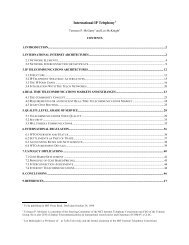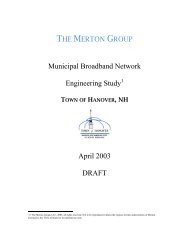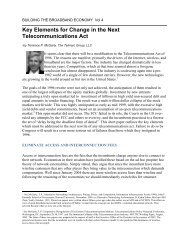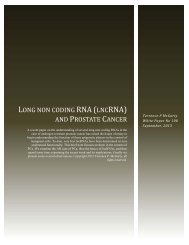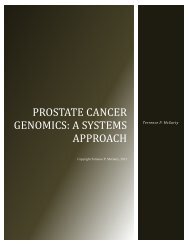progressivism, individualism, and the public ... - Telmarc Group
progressivism, individualism, and the public ... - Telmarc Group
progressivism, individualism, and the public ... - Telmarc Group
Create successful ePaper yourself
Turn your PDF publications into a flip-book with our unique Google optimized e-Paper software.
The <strong>Telmarc</strong> <strong>Group</strong><br />
PROGRESSIVISM, INDIVIDUALISM, AND THE PUBLIC<br />
INTELLECTUAL<br />
strange way it is FDR who comes down with Hamilton, <strong>the</strong> strong Federalist, yet <strong>the</strong>y<br />
have become supporters of Jefferson <strong>the</strong> interpreter of a flexible <strong>and</strong> ever changing<br />
Constitution. Ut appears as if consistency is not one of <strong>the</strong>ir fine points.<br />
Sunstein <strong>the</strong>n states 181 :<br />
"I have emphasized that <strong>the</strong> New Deal was highly experimental <strong>and</strong> pragmatic, not<br />
organized by a clear <strong>the</strong>ory of any kind."<br />
Indeed <strong>the</strong> New Deal was pragmatic to <strong>the</strong> extent of irrational flailing. They tried<br />
anything but <strong>the</strong>y had a plan. Henry Wallace <strong>the</strong> Secretary of Agriculture, who prior to<br />
coming to Washington did nothing but run <strong>the</strong> family started farm magazine, near<br />
bankruptcy, was <strong>the</strong> extreme progressive that FDR put to take over production across<br />
many segments of <strong>the</strong> country. In fact it was Wallace who became VP during <strong>the</strong> War<br />
until it became obvious that his ways were so extreme that he was bounced for Truman.<br />
Thus <strong>the</strong>re was a <strong>the</strong>ory, <strong>the</strong> well worked out <strong>the</strong>ory of <strong>the</strong> progressives, having<br />
Washington in control, having people look to Washington for everything, tell <strong>the</strong> people<br />
that what <strong>the</strong>y are getting is <strong>the</strong>ir right, <strong>and</strong> <strong>the</strong>n take from <strong>the</strong> means of production what<br />
was needed o pay out <strong>and</strong> redistribute <strong>the</strong> wealth. This is <strong>the</strong> world that Sunstein wants to<br />
reinvigorate, to bring to fruition. It is a world that will be <strong>the</strong> final death call for any for<br />
of <strong>individualism</strong>. In this world one cannot be an individual, one must be part of <strong>the</strong><br />
whole.<br />
Sunstein goes on to show in Chapter 9 how <strong>the</strong> Supreme Court during <strong>the</strong> Warren years<br />
actually empowered many of <strong>the</strong> rights that FDR sought to include in <strong>the</strong> Constitution.<br />
The selections which Sunstein recounts are <strong>the</strong> embodiment into Supreme Court<br />
decisions of many of <strong>the</strong> elements of <strong>the</strong>se rights. Those from civil rights, housing,<br />
education, <strong>and</strong> <strong>the</strong> like. The Court managed via <strong>the</strong> penumbra of <strong>the</strong> Constitution in a<br />
Wilsonian manner to include many progressive "rights" into law by interpretation of<br />
existing law. In a sense that is <strong>the</strong> way <strong>the</strong> legal process function. However it is<br />
acceptable for Sunstein if it works that when he gets what he believe is de but he objects<br />
when it works <strong>the</strong> o<strong>the</strong>r say on <strong>the</strong> right to bear arms.<br />
Thus for Sunstein <strong>the</strong> new rights presented by FDR should <strong>and</strong> must be included, despite<br />
whatever cost must be paid, <strong>and</strong> <strong>the</strong> way that it is accomplished is via an activist court<br />
<strong>and</strong> judges who interpret <strong>the</strong> Constitution in such a Wilsonian manner to achieve that<br />
change. In many ways this suggested approach of Sunstein is <strong>the</strong> anti<strong>the</strong>sis of <strong>the</strong><br />
Burkean approach we first started with.<br />
6.6 AMY GUTMANN<br />
181 Sunstein, Constitution, p 77.<br />
Page 181



